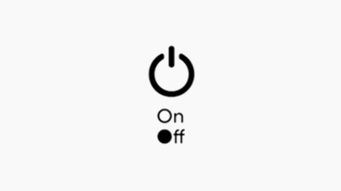
How to design a new wastewater treatment plant system
Design a new wastewater treatment plant system goes through a number of stages. Adhering to them saves the operators and maintenance personnel a number of potential problems. Since we at CareWater Foundation seek to be familiar with all aspects of water treatment solutions, we have dedicated our article today to explaining these stages. If you are buying a newly built home that requires an off-grid system, the builders have likely already taken care of this, and you only need to take care of operating the system.
But what if you are moving into an existing property with an old off-grid sewage system that needs to be replaced or is owned by the owner? What if you need to install a new sewage treatment plant on your property? How do you plan for this, and what are the important things you need to consider? These are the questions that this guide will try to answer. Let’s start by taking a look at the regulations surrounding sewage treatment plants.
Also read: Basics of Designing a Water Treatment Plant in a Hotel
Installing a Sewage Treatment Plant
Off-grid sewage is dangerous. We all want our sewage to simply disappear when we pull a string or plug, without having to think about it again. For most of us, that’s exactly how it works. However, it’s becoming increasingly common for properties to require an off-grid sewer system. Either because they’re too far from a mains connection, or because the area’s mains system has reached capacity. One solution to this problem is to install a sewage treatment plant.
Video Explaining How a Sewage Treatment Plant Works?
Understanding Sewage Treatment Plant Legislation
Installing an off-grid drainage system can be daunting when you start to research all the legal aspects. There are rules and regulations for everything from what type of tank is suitable for the property to where it can be installed, where it can be discharged, and what type of ground conditions are acceptable.
Compliance with all of these regulations is of utmost importance, as failure to do so can be disastrous for the environment and leave you, the property owner, vulnerable to prosecution. The local authority or relevant environmental agency has the power to test any off-grid drainage system to ensure that it does not comply with the regulations and they can ultimately take legal action if this is the case.
It is therefore essential that you ensure that you fully understand and comply with all regulations that will affect the installation and operation of the sewage treatment plant. This responsibility lies solely with the property owner and should be taken very seriously.
Important Article on: Successful Design Factors for a Sewage Treatment Plant
Conducting a Site Survey
Before you even think about purchasing and installing your sewage treatment plant, you first need to assess the installation area to see what type of system you will need.
Important note: If any part of the building that your treatment plant will serve is within 30 metres of a public sewer, you will need to apply to the National Environment Agency for permission to discharge to an alternative system, and you must have a good reason for wanting to do so. The Agency will usually not allow a private system to be used if there is a public sewer available, according to the General Enforcement Rules. To find out if there is a public sewer near your property, contact your local water authority.
Unfortunately, when it comes to sewage treatment, it is not always a matter of simply choosing an ‘off-the-shelf’ product and installing it. There are many factors that affect the suitability of any tank for your property, including the type of sewage to be treated, the quality of the waste output required, the proximity of the intended installation point to any buildings, the location of the discharge point, the porosity of the ground if a drain field is required and the availability of access to the site for maintenance.
It is also important to check whether you need building regulations approval or planning permission for your sewage treatment plant before proceeding. Failure to comply with or obtain any of these may prevent installation altogether.
Conduct a groundwater protection zone survey
- Test pit to assess the trial site (if you need to install a drain field)
- Conduct leakage tests (if you need to install a drain field)
- Check that the tank and drain field (if you are using one) can be located far enough away from habitable dwellings, in accordance with the general mandatory rules: (At least 3m away from any property boundary line or any significant root systems (i.e. trees and shrubs) – At least 10m east of any habitable building – No more than 30m away from a hard surface suitable for access by a sludge removal tank) Assuming you have green lights in all areas of the above, you can now move on to the design phase of your system.
Designing a wastewater treatment plant system
The results of your site survey will influence the design of your system. From the type of discharge method you can choose, to how deep and where to install the tank. The options you have should really focus on finding the system that is right for you. Now it’s time to start looking for a wastewater treatment plant that fits your criteria.
There are a few additional calculations to make and things to consider to help you find the right one. These include:
- Sizing the tank according to your needs
- Choosing the right tank
- Sizing the drain field
How do I size a wastewater treatment plant?
Since most wastewater treatment plants are rated by the size of the population they can serve. You might think it’s a simple case of matching the category to the number of people lined up on the property. Unfortunately, calculating the size of the wastewater treatment plant you need is a bit more complicated. You need to consider the total potential population of the property, based on its size and number of bedrooms. You might only have two people in a 4-bedroom home. But if you install a wastewater treatment plant based on your current needs alone. You could find yourself in a mess if your family comes to visit for a week or two during the holidays.
You may also find it difficult to sell your property later without first upgrading your wastewater treatment plant to a more appropriate size. For these reasons. We highly recommend reading our article on how to size a septic tank or wastewater treatment plant to ensure you choose the right capacity for your property.
How to choose the right home wastewater treatment plant?
Unfortunately, there is no straightforward answer to this question. The best wastewater treatment plant for you depends on many factors. From those that stem from constraints (such as how deep you can install the tank and the discharge options). To those that relate to more personal choice (such as the desire for low operating costs or minimal aesthetic disturbance to your garden). As a result, it is very difficult to give advice on how to choose the best wastewater treatment plant without knowing the specific details of the project.
Do I need a gravity or pumped wastewater treatment plant?
Most wastewater treatment plants are designed to operate on a gradual feed of gravity only. However, if the tank is to be installed in a location where there is no natural gravity fall from the outlet pipe. A pump may be needed to achieve the required discharge level. This can sometimes be the case When discharging into a watercourse. Gravity is the preferred option if at all possible. Adding a pump to the system adds an extra moving part that needs maintenance to prevent the system from failing. Relying on a pump also makes the system more dependent on an uninterrupted power source. Otherwise, the tank could fill up quickly in the event of a power outage. If you are unsure whether your system needs a pump, it is highly recommended that you seek professional advice.
How to Size a Drain Basin?
Drain fields (sometimes referred to as septic fields, leach fields, or sewage absorption basins) are subsurface wastewater treatment facilities. That are used to remove contaminants and impurities from the waste that exits a septic tank or wastewater treatment plant. They typically consist of a series of trenches, containing perforated pipes and gravel, located beneath a soft landscaped area such as a park. If you need a drain field for your sewage treatment plant (perhaps because you cannot discharge it into a watercourse). Determining the size required for your system will depend on the size of your property/number of occupants and the results of your leakage tests.


























